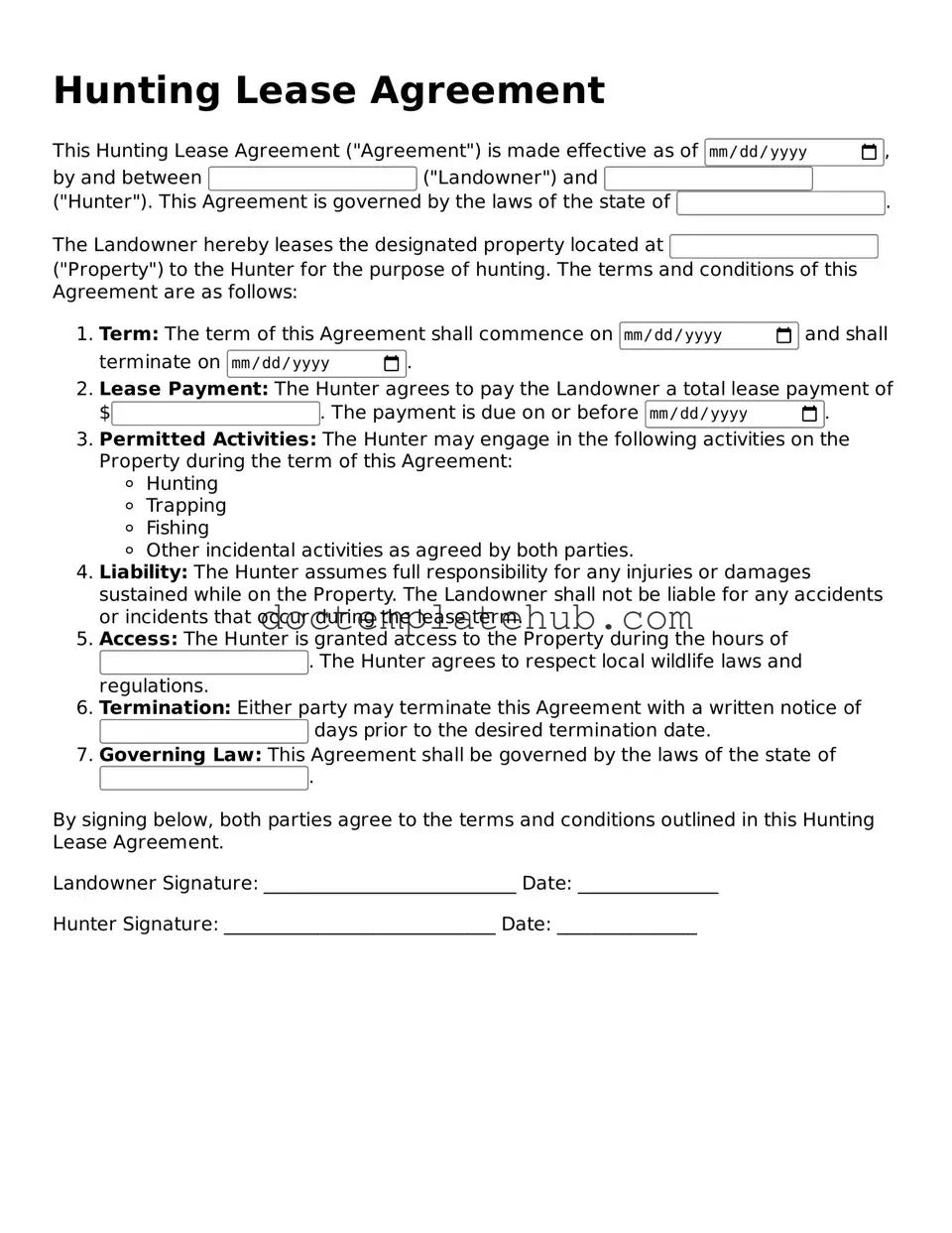The Hunting Lease Agreement shares similarities with the Residential Lease Agreement. Both documents outline the terms under which one party (the lessee or tenant) pays another party (the lessor or landlord) for the right to use a property. Each agreement typically includes details about the duration of the lease, payment terms, and responsibilities for maintenance. However, while a residential lease focuses on living accommodations, a hunting lease emphasizes land use for recreational purposes.
Another related document is the Agricultural Lease Agreement. Like the Hunting Lease Agreement, this document allows a lessee to use land for specific activities—in this case, farming. Both agreements specify the allowed uses of the land, lease duration, and payment details. However, agricultural leases often include provisions for crop management and land improvements, which are less relevant in hunting leases.
The Commercial Lease Agreement is also similar, as it governs the rental of property for business purposes. Both agreements detail the rights and responsibilities of the parties involved. However, commercial leases tend to be more complex, often addressing zoning laws, business operations, and tenant improvements, while hunting leases focus primarily on access and usage rights for recreational activities.
The Fishing Lease Agreement is closely related as well. It allows individuals to fish on a property for a fee, similar to how a hunting lease permits hunting. Both documents outline the terms of access, duration, and any restrictions on activities. The primary difference lies in the type of activity permitted—hunting versus fishing.
The Timber Lease Agreement is another comparable document. It permits one party to harvest timber from a specific area of land. Both agreements require clear definitions of what is allowed and the duration of the lease. However, timber leases often include provisions related to environmental impact and land restoration, which are not typically found in hunting leases.
The Oil and Gas Lease Agreement also shares similarities. This document allows for the exploration and extraction of oil and gas resources from a property. Both agreements involve compensation for the use of land, but oil and gas leases often include complex terms related to royalties, environmental regulations, and land restoration obligations.
A Lease Agreement form is essential not only for residential properties but also for various recreational uses, such as fishing or farming. This legal document establishes the terms and responsibilities between a landlord and a tenant, fostering a clear understanding of payment, maintenance, and duration. For those looking to draft or find a suitable template, resources like https://documentonline.org/blank-lease-agreement can provide valuable assistance in creating a comprehensive agreement.
The Cell Tower Lease Agreement is another relevant document. It allows telecommunications companies to install equipment on private land. Both the cell tower lease and hunting lease specify payment terms and duration. However, the cell tower lease typically includes technical specifications and maintenance responsibilities, which are not applicable in hunting agreements.
The Lease Agreement for Recreational Use is similar in that it allows for various recreational activities, including hunting. Both documents detail the rights granted to the lessee and the responsibilities of both parties. However, a recreational use lease may encompass a broader range of activities beyond hunting, such as hiking or camping.
Lastly, the Lease Purchase Agreement is related but serves a different purpose. It allows a tenant to lease a property with an option to purchase it later. While both agreements outline terms for use and payment, a lease purchase agreement includes additional clauses regarding the potential sale of the property, which is not a consideration in a standard hunting lease.
